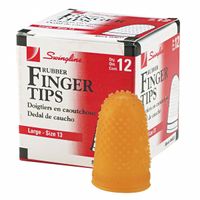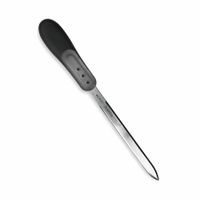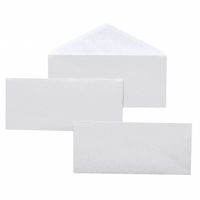Call +(254) 703 030 000 / 751 483 999 / 721 704 777
- Home
- Office Supplies
- Office Paper Notebooks
- Envelopes Letter Openers
.....Read More
Frequently Asked Questions
What are the best types of envelopes for secure document transport?
The best types of envelopes for secure document transport are:
1. **Tamper-Evident Envelopes**: These envelopes are designed to show visible signs of tampering. They often feature security seals that, once broken, cannot be resealed without evidence of interference. This makes them ideal for transporting sensitive documents where security is a priority.
2. **Poly Mailers**: Made from durable polyethylene, poly mailers are resistant to tears, moisture, and punctures. They are lightweight yet strong, providing a secure option for transporting documents that need protection from environmental factors.
3. **Bubble Mailers**: These envelopes have a layer of bubble wrap inside, offering cushioning and protection against physical damage. They are suitable for transporting documents that may be subject to rough handling.
4. **Security Envelopes**: These envelopes feature a patterned inner lining that prevents the contents from being seen through the envelope. They are often used for mailing confidential documents like checks or legal papers.
5. **Waterproof Envelopes**: Made from materials that resist water penetration, these envelopes are ideal for transporting documents in environments where they might be exposed to moisture.
6. **Fireproof Envelopes**: Constructed from fire-resistant materials, these envelopes provide protection against fire damage, making them suitable for transporting highly sensitive documents.
7. **Metallic Foil Envelopes**: These envelopes offer a high level of security by blocking electromagnetic interference, which can be crucial for transporting documents with sensitive electronic data.
8. **Reinforced Envelopes**: Featuring additional layers or fibers for strength, these envelopes are designed to withstand rough handling and are ideal for transporting heavy or bulky documents.
Choosing the right envelope depends on the specific security needs, environmental conditions, and the nature of the documents being transported.
How do letter openers work to open envelopes efficiently?
Letter openers are designed to efficiently open envelopes by providing a sharp edge or blade that slices through the paper, allowing for a clean and quick opening. The typical letter opener consists of a handle and a blade. The handle provides a comfortable grip, while the blade is usually thin and sharp, often made of metal or plastic.
To use a letter opener, you insert the blade under the flap of the envelope, usually at one of the corners. The sharp edge of the blade is then drawn along the edge of the envelope, slicing through the paper. This action separates the glued flap from the rest of the envelope without damaging the contents inside. The design of the blade ensures that it cuts through the paper smoothly, minimizing the risk of tearing or ripping the envelope, which could potentially damage the contents.
Some letter openers have a pointed tip, which helps in easily inserting the blade under the flap. Others may have a serrated edge, which can provide additional grip and control while cutting. The efficiency of a letter opener lies in its ability to make a precise cut with minimal effort, reducing the time and effort needed compared to opening an envelope by hand.
Overall, letter openers are simple yet effective tools that enhance the process of opening envelopes by providing a clean, quick, and safe method to access the contents without causing damage.
What materials are used in making secure envelopes?
Secure envelopes are designed to protect sensitive documents and items during transit. The materials used in their construction are chosen for their durability, tamper-evidence, and security features. Here are the key materials commonly used:
1. **Paper**: High-quality, durable paper is often used for secure envelopes. It may be reinforced with fibers to enhance strength and prevent tearing.
2. **Polyethylene**: This plastic material is used for its strength and flexibility. It is often used in tamper-evident envelopes, providing resistance to moisture and tearing.
3. **Tyvek**: A brand of flashspun high-density polyethylene fibers, Tyvek is lightweight, durable, and resistant to water, chemicals, and tearing. It is often used for high-security envelopes.
4. **Kraft Paper**: A strong, durable paper made from wood pulp, kraft paper is often used for its tear resistance and ability to withstand rough handling.
5. **Metallic Foil**: Used as a lining or coating, metallic foil can provide additional security by blocking light and preventing unauthorized viewing of contents.
6. **Bubble Wrap**: Often used in padded envelopes, bubble wrap provides cushioning to protect contents from physical damage.
7. **Security Tints and Patterns**: Printed on the inside of envelopes, these prevent the contents from being read through the envelope.
8. **Tamper-Evident Adhesives**: Special adhesives are used to seal envelopes securely. If tampered with, they leave a visible mark or destroy the envelope, indicating unauthorized access.
9. **Holographic Seals**: These are used for added security, as they are difficult to replicate and provide a visual indication of tampering.
10. **RFID Blocking Materials**: Used in envelopes designed to protect against electronic theft, these materials prevent unauthorized scanning of RFID chips.
These materials are combined to create envelopes that ensure the security and integrity of their contents during transit.
Can letter openers damage the contents of an envelope?
Yes, letter openers can potentially damage the contents of an envelope. When using a letter opener, the risk of damage arises from several factors:
1. **Improper Technique**: If the letter opener is inserted too deeply or at an incorrect angle, it can slice through the envelope and into the contents, such as paper documents, photographs, or other materials.
2. **Sharpness of the Blade**: A very sharp letter opener can easily cut through thin paper or delicate items inside the envelope if not used carefully.
3. **Envelope Size and Content Positioning**: Envelopes that are tightly packed or have contents positioned close to the edges are more susceptible to damage. If the contents are not centered or are pressed against the side being opened, they are at a higher risk of being cut.
4. **Type of Letter Opener**: Some letter openers have serrated edges or are designed for heavy-duty use, which can increase the likelihood of tearing or cutting the contents if not handled with precision.
5. **User Error**: Inexperience or haste can lead to improper use of the letter opener, increasing the chance of damaging the contents.
To minimize the risk of damage, it is advisable to use a letter opener with a smooth, non-serrated edge and to insert it gently along the top edge of the envelope, ensuring it stays parallel to the contents. Additionally, feeling for the position of the contents before opening and using a controlled, steady motion can help prevent accidental cuts or tears.
What are the standard sizes of envelopes for mailing documents?
Standard envelope sizes for mailing documents vary by region, but here are some common sizes:
1. **DL (Dimension Lengthwise)**:
- Size: 110 x 220 mm (4.33 x 8.66 inches)
- Fits A4 paper folded into thirds. Common for business correspondence.
2. **C6**:
- Size: 114 x 162 mm (4.49 x 6.38 inches)
- Fits A4 paper folded into quarters or A6 cards.
3. **C5**:
- Size: 162 x 229 mm (6.38 x 9.02 inches)
- Fits A4 paper folded in half or A5 documents.
4. **C4**:
- Size: 229 x 324 mm (9.02 x 12.76 inches)
- Fits A4 paper without folding.
5. **C3**:
- Size: 324 x 458 mm (12.76 x 18.03 inches)
- Fits A3 paper without folding.
6. **B4**:
- Size: 250 x 353 mm (9.84 x 13.90 inches)
- Slightly larger than C4, allows for thicker contents.
7. **B5**:
- Size: 176 x 250 mm (6.93 x 9.84 inches)
- Fits A5 documents or A4 folded once.
8. **No. 10** (commonly used in the U.S.):
- Size: 4.125 x 9.5 inches (104.8 x 241.3 mm)
- Fits standard letter-sized paper (8.5 x 11 inches) folded into thirds.
9. **A7**:
- Size: 5.25 x 7.25 inches (133 x 184 mm)
- Often used for greeting cards or invitations.
These sizes accommodate various document dimensions and folding methods, ensuring secure and professional mailing.
How can I ensure the privacy of documents sent in envelopes?
To ensure the privacy of documents sent in envelopes, consider the following steps:
1. **Use Security Envelopes**: Opt for envelopes with built-in security features, such as tamper-evident seals and opaque interiors, which prevent the contents from being seen or accessed without obvious signs of tampering.
2. **Double Enveloping**: Place the document in an inner envelope, seal it, and then place it in an outer envelope. This adds an extra layer of protection and makes unauthorized access more difficult.
3. **Secure Sealing**: Use strong adhesive or water-activated seals to close the envelope. Consider using additional sealing methods like tape or wax seals for added security.
4. **Confidential Markings**: Clearly mark the envelope with "Confidential" or "Private" to alert handlers to the sensitive nature of the contents, ensuring careful handling.
5. **Registered or Certified Mail**: Use postal services that offer tracking and require a signature upon delivery. This ensures the document is only received by the intended recipient and provides a delivery record.
6. **Encryption**: If sending digital documents, encrypt the files before printing and sending them. This ensures that even if the document is intercepted, it cannot be easily read.
7. **Address Accuracy**: Double-check the recipient's address to prevent misdelivery. Use clear, legible handwriting or printed labels to avoid errors.
8. **Return Address**: Include a return address to ensure the envelope can be returned if undeliverable, reducing the risk of it being opened by unintended recipients.
9. **Secure Drop-off and Collection**: Use secure mailboxes or drop-off points and advise the recipient to collect the envelope promptly to minimize the risk of interception.
10. **Recipient Verification**: Confirm the recipient's identity and address before sending, and notify them of the expected delivery to ensure they are prepared to receive it.
Are there specific envelopes designed for transporting CDs and photos?
Yes, there are specific envelopes designed for transporting CDs and photos. These envelopes are crafted to provide protection and ensure safe delivery of delicate items like CDs and photographs.
For CDs, the envelopes are often made from rigid or padded materials to prevent bending and scratching. They may include a bubble wrap lining or be constructed from sturdy cardboard to absorb shocks during transit. Some CD envelopes also feature a self-sealing adhesive strip for secure closure and may have a tamper-evident design to ensure the contents remain intact.
For photos, envelopes are typically made from acid-free materials to prevent any chemical reactions that could damage the photographs over time. These envelopes are often reinforced with cardboard or have a rigid structure to prevent bending and creasing. They may also include a moisture-resistant lining to protect against humidity and water damage. Additionally, photo envelopes often come in various sizes to accommodate different photo dimensions, from standard prints to larger formats.
Both types of envelopes are designed with the specific needs of their contents in mind, ensuring that CDs and photos are transported safely and arrive in pristine condition.





